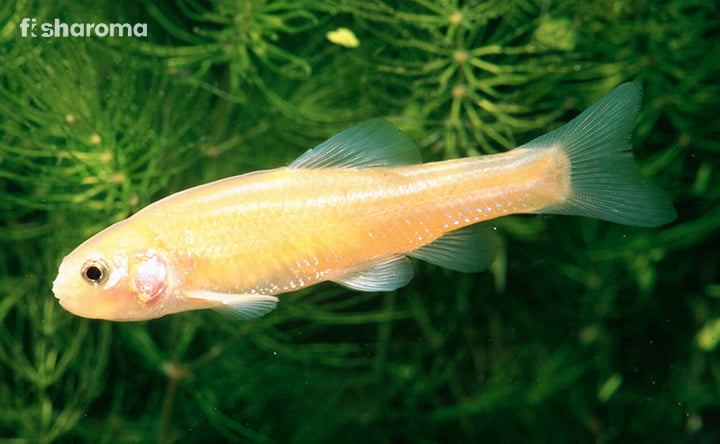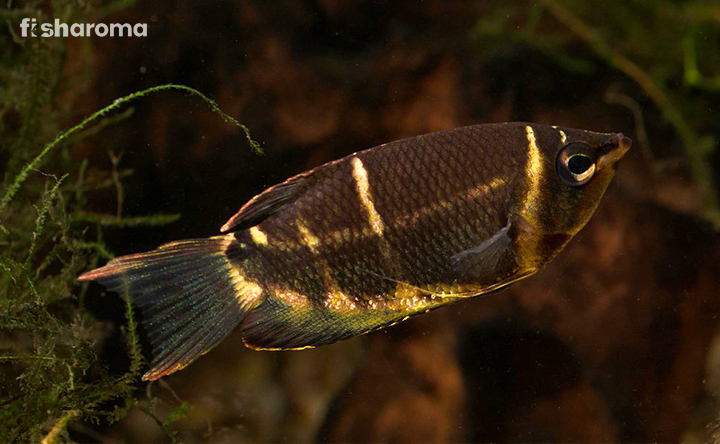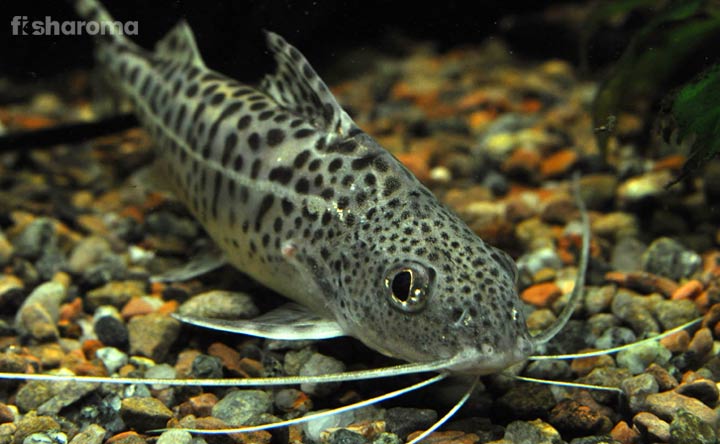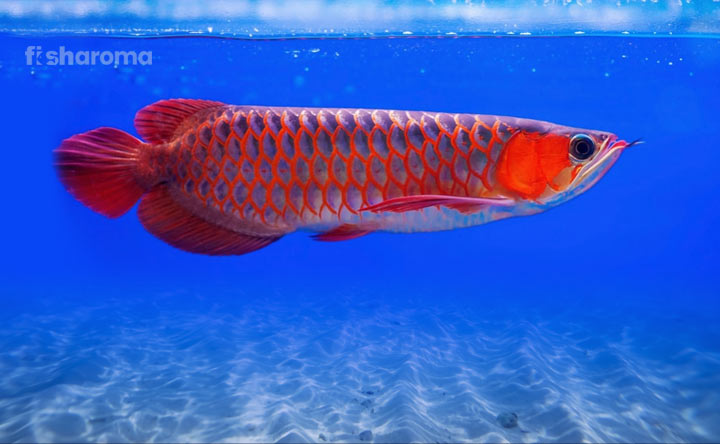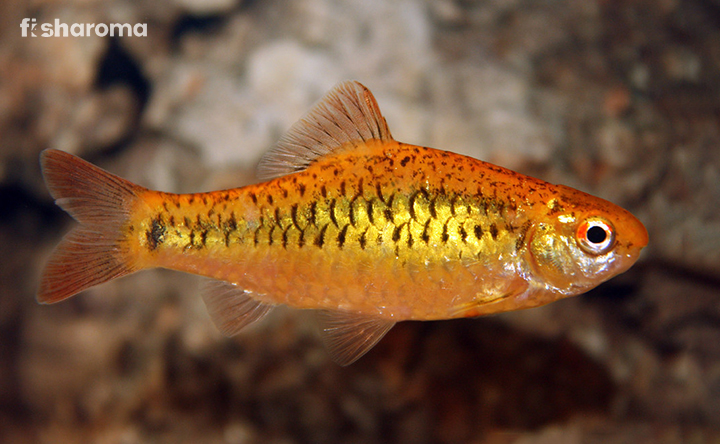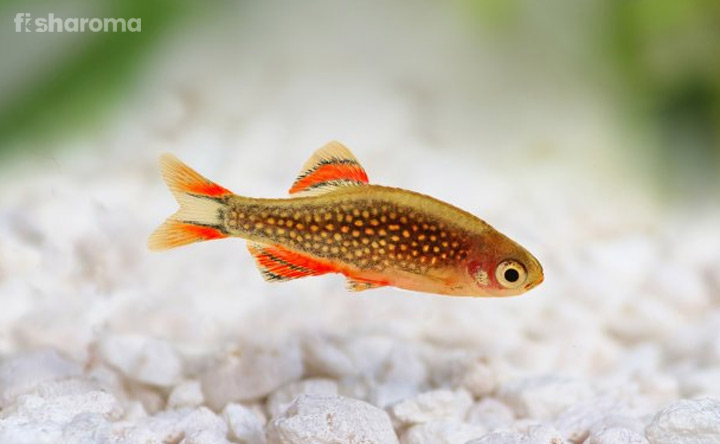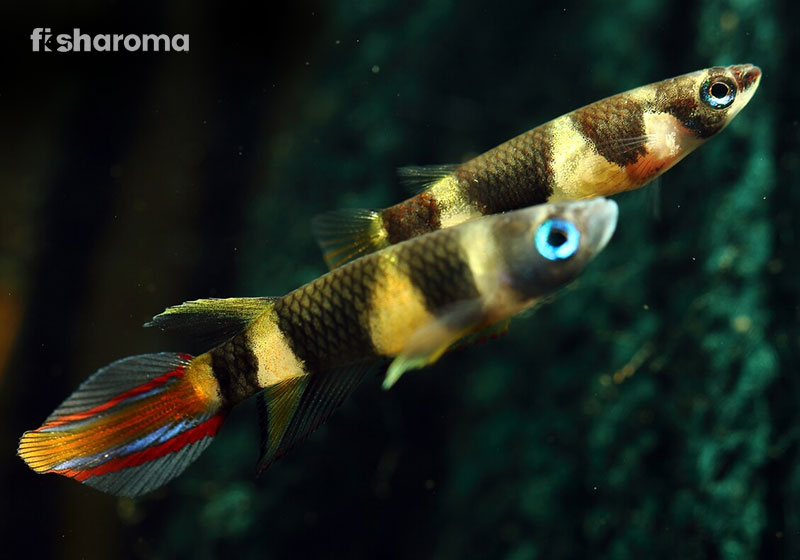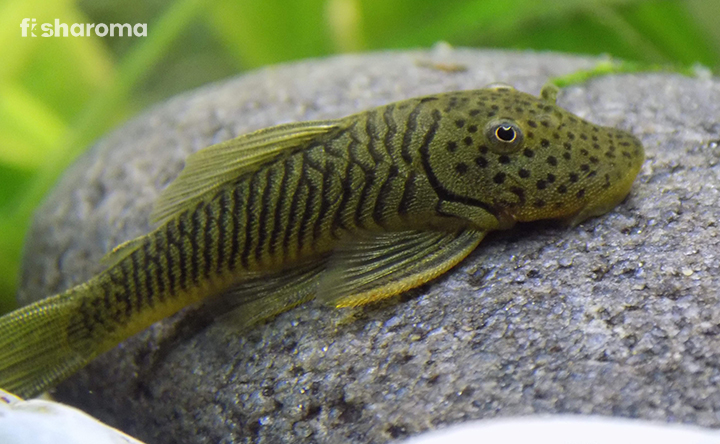Scarlet Badis – The Complete Care Guide of This Tiny Water Buddy
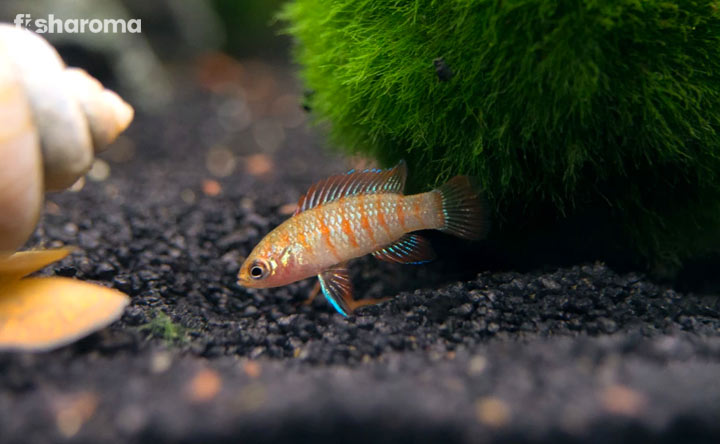
- Origin and Habitat of Scarlet Badis
- Appearance of Scarlet Badis
- Behavior of Scarlet Badis
- Lifespan of Scarlet Badis
- Diet of Scarlet Badis
- Tank Requirements of Scarlet Badis
- Water Type for Scarlet Badis
- Compatibility of Scarlet Badis
- Breeding of Scarlet Badis
- Common Diseases of Scarlet Badis
- Difficulties in Petting the Scarlet Badis
- Summary
Are you an experienced fish keeper yet unsure about your next aquatic pet? Well, that’s quite natural. You will get multiple options for your existing small aquarium, and Scarlet Badis is one of them. You can use your previous fish keeping skills at the time of fulfilling the demands of this enthralling beauty. Scarlet Badis will make your nano-aquarium even more beautiful with its unique coloration that gives them a magnificent look.
It will definitely be very fascinating to behold such a fish doing fun activities. You can raise Scarlet Badis healthily by following this care guide.
Key Specifications of Scarlet Badis
Before knowing this fish and its requirements in detail, get a quick description of it:
| Scientific Name | Dario dario |
| Family | Badidae |
| Origin | India |
| Size | 1” (2.54 cm) |
| Color | Orange/ruby red and silver |
| Care Level | Medium |
| Lifespan | 3-4 Years |
| Temperament | Peaceful (Males are sometimes extremely aggressive) |
| Compatibility | Only with small fish |
| Tank Size | 10 gallons or more |
| Diet | Omnivore |
Overview
This fish is also known as Scarlet Dario, Scarlet Gem Badis, Blue Perch, and Gem Badis. It is popular among fish keepers for its shy nature and hunting tendencies. Previously, it was not so famous among aquarists because this fish was not at all available in the global base, but now it can be spotted in the aquariums of various parts of the globe. Some aquarists prefer this fish because the change of color depending on their moods is pretty visible, which delights the fish keepers a lot.
Origin and Habitat of Scarlet Badis
This fish can be found in various regions of India, especially in the Brahmaputra River Basin of Assam in India. The southern parts of West Bengal are also considered as their habitat. Along with that, you can also find this fish in the Tumapao River basin in Duma, Yamuna River basin in Himachal Pradesh, Mahanadi River basin in Orissa.
This fish lives in almost all the slow-moving streams with dense vegetation in east India. The muddy or sandy base is their favorite in natural habitat; also, they are found in the rice fields.
This fish inhabits the shallow lakes of Bhutan at present. Besides, it is also available in Brahmaputra River which runs through China and Bangladesh. So, this fish is available in these countries too. This fish is available in abundance in Nepal and Pakistan also.
Appearance of Scarlet Badis
This fish has a mesmerizing look because of its color combination. Males generally have brighter colors. On the other side, females are smaller than males and have entirely different patterns, which make their appearance quite dull. However, at the juvenile stage, you will not be able to understand the difference due to their extremely small size. Both have a slender structure, though.
Size of Scarlet Badis
This fish is tiny, and the length of the adult one is 1” only. Females are even smaller than that.
Color of Scarlet Badis
Male fish are orange or ruby red. Along with that, you can find seven bands of glowing silver in them. Due to such shades of the males, they are compared to the water-rubies.
Their fins are white, and in some parts of their body, you can see the silver color has turned into dark blue or bluish-white, especially near the ventral fins. Sometimes the fins are bluish-white at the start but white or sometimes transparent at the edges. This blue pigmentation makes their appearance even more stunning. Their almost transparent tails and fins enhance their looks.
Females have a silver-grey body, and towards their sides, often, the pale orange tone is seen. The silvery bands of the males are missing among them. Adult females sometimes have orange stripes but they are extremely pale. This difference between males and females is because of sexual dimorphism.
Behavior of Scarlet Badis
This fish is generally a peaceful fish, and it does not attack other smaller fish in general. However, the chances of a territorial fight are quite higher among them. Also, they are known for their shy and timid nature. It gets easily scared with a slight tap in the aquarium wall. Therefore, this fish needs plenty of hiding spaces. This fish is a slow swimmer, and throughout the day, it swims in the middle and bottom of the aquarium.
Lifespan of Scarlet Badis
This fish can live up to 3-4 years in the aquarium; however, their lifespan in natural habitat is much shorter than this. Wondering why this happens? The reason behind this is their size and their highly sensitive nature. Due to territorial fights, they often kill other males. Also, this fish is often consumed by the large ones in the natural habitat.
Diet of Scarlet Badis
Well, if you think that this tiny fish will eat anything, you are wrong. This fish is extremely selective about food. It is an omnivorous fish, and they often refuse the food if they do not like that. You can try the fast-sinking foods for them. It will be good to include the following foods in their daily diet:
- Brine shrimp
- Banana worms
- Any small invertebrates
- Artemia
- Bloodworms
- Daphnia
- Microworms
- Cyclopes
- Small Tubifex
- Mysis
- Glassworms
- Grindal worms
- Frozen food (once or twice a week)
Avoid any flakes which are generally accepted for all other aquarium fish and include more live foods in their diet. Ignore all the dry veggies as well. Also remember, variety in the diet of Scarlet Badis is very important.
Indeed, this fish often refuse foods, but it tends to be obese for consuming excessive live foods. So, do take care of that. Also, avoid any low-quality fish meal for them as they are prone to catch diseases.
Even though they are small, Scarlet Badis are skilled hunters. In their natural habitats, they often seem to jump on the prey and eat zooplankton, small insects, small crustaceans, and insect larvae. Also, it is not rare to find a group of this fish feasting on a worm.
The quantity of Cyclops, Daphnia, Bloodworms, and Tubifex needs to be highly monitored as Scarlet Badis may have adverse effects due to these.
Tank Requirements of Scarlet Badis
Due to the size of the fish, you have to maintain its tank requirements with utmost care. It will be a bit difficult to replicate its natural habitat because of its high demand for vegetation in the tank. You can go through the following guidelines to make an ideal tank for Scarlet Badis.
Tank Size
Minimum a 6-gallon tank is required for this, and if you want a community tank, you have to opt for a larger one. A 10-gallon tank is considered ideal for one male and two females because almost one-third of the aquarium will be covered with the plants to meet their demands.
They feel safe in a spacious tank, so for six species, make sure you choose a 20-gallon tank.
Substrate
It likes sandy and muddy base so you can make a base of sand or small stones for them. You can use pebbles as well. You can use Mopani wood and Aide cones as the base.
Aquatic Plants
Aquatic plants are very necessary for this fish because these plants create an ambiance like their natural habitat. It is already mentioned that this fish has a high demand for vegetation, which you can fulfill by including Limnophila, Java moss, Hygrophila, Water Sprite, Dwarf Hairgrass, Vallisneria, Ottelia and Rotala in the aquarium.
Besides, creating an ambiance like nature, plants help to reduce their stress. These aquatic plants have a direct contribution to the healthy upbringing of this fish, so do not skip this. Don’t worry; there is still no proof of uprooting the plants by this fish.
Filter
A strong filter is required for this fish to keep the water clean all through. Avoid strong current in the water because it prefers slow-moving water.
Lighting
It needs moderate lighting, and you can use fluorescent lights for that. It will be better to skip the metal halides as it will heat and change the temperature of tank water. Also, make sure that the lights are not flashy because the appearance of this fish looks best in mono-color lighting.
Décor
It is very important to insert the caves here because they get startled easily. Caves will give them places to hide and help them to be stress-free. Rocks and driftwood can be added in their tank too. They can relax here for the entire day.
Water Type for Scarlet Badis
This fish prefers crystal clear water, and you have to be extremely active with its cleaning schedules. Along with that, you have to be strict with other parameters to raise this fish healthy. Take a look at the details of the water type.
Temperature
Maintain the temperature 71-79°F (21.66-26.11°C). Slightly higher or lower than this range can result in deterioration of fish health.
pH level
The ideal pH level for this fish is 6.5-7.5.
Hardness
Water Hardness has to be 10-20 dGH.
Nitrate Level
The nitrate level has to be zero necessarily. Be careful about that.
Cleaning Methods
This fish is intolerant of any dirt. So whether it is the fish excrete or food particles, remove it as soon as you find that. Take care of the aeration too.
Replacement Procedure
50% of water change is needed each week. In case, you are using a large tank (larger than 10-gallons), try one-third water change each week. If you need to make any changes in the water, do it slowly. Make sure the new batch of water has the same parameters as that of the old batch of tank water. They are intolerant of extreme changes.
This fish cannot tolerate even negligible high or low temperature or pH level, so it will be better to test the water daily.
Compatibility of Scarlet Badis
Keeping more than one male Scarlet Badis in the same tank can be dangerous because of their territorial fights. Females are not that aggressive, so you can keep one male with a few females. It will be ideal for them. If it’s a spacious tank where males can have separate territories, it will not be an issue to put two males but try not to do that.
Suitable Tank Mates of Scarlet Badis
If you are planning to keep this fish with others, you need to be very attentive at the time of selecting their tank mates. Any small Gourami (Liquorice Gourami) or Rasbora (Dwarf Spotted Rasbora specifically) will be a good choice here. However, it cannot be guaranteed that they will not eat scarlet Badis. Experts have mentioned that this fish as unsuitable for a community tank. Keeping them with Cherry Shrimp will be alright in some cases. It will be better to keep them within their own community.
Unsuitable Tank Mates of Scarlet Badis
This fish is aggressive towards their community; others make them scared only. They don’t mess with others, and they literally mind own business.
Any large and aggressive fish will be a threat to this fish as Scarlet Badis will appear as food to them due to their tiny size. Also, the large and aggressive ones will be a cause of stress for Scarlet Badis, and due to that, they will not come out of the caves even at the time of feeding.
Any active swimmer, large, or aggressive fish are to be avoided as tank mates. The following ones are to be avoided.
- Goldfish
- Betta
- Any Large Cichlids
- Cherry Barb
It will not be safe to put shrimps or snails along with Scarlet Badis because these will be considered as their foods.
Breeding of Scarlet Badis
This fish can breed both in acidic and alkaline water, so you do not need to adjust the pH level for breeding purposes. Make sure there is no shortage of aquatic plants as they will lay eggs on the leaves of plants. For this purpose, the plants with wide leaves such as Water Horn Fern will be good.
Males intensify their colors so that the females can be attracted at the time of spawning. It is a way of impressing the females so that they come in their territory. Males also shake their tails for this reason. In case the females do not respond to this, males will chase them towards the territory.
Females will allow the male fish to embrace her at the time of laying the eggs so that they can fertilize the eggs. One female lays 80 eggs per hour, and after this, the males drive away from the females.
It is not that the males will take care of the eggs; rather, they will secure their territory only. The eggs get hatched after 2-3 days, and after hatching, they keep hiding inside the plants. No outside foods are required at this stage. In their juvenile stage, and you can feed them with chopped worms and Brine Shrimps then. After hatching, remove the male fish from the tank because they may eat the fries.
Common Diseases of Scarlet Badis
This fish requires clean water and a well-maintained tank so that it can avoid the common diseases. Obesity and Ich are the two diseases that can be seen in this fish.
Due to the improper feeding, this fish can be skinny or obese. Actually, aquarists often do not understand the ideal quantity of food, so they either overfeed or underfeed the fish, which results in skinny disease or obesity. You can consult an expert to determine the right quantity of food.
Another common disease in this fish is Ich. It is a bacterial disease that affects the gills and skin of the fish. The reason for this disease is improper water conditions. As the fish is quite small, it will be better to get the treatment done under an expert’s supervision.
Difficulties in Petting the Scarlet Badis
This fish is a bit difficult to keep because it has specific requirements for tank and water. It is not a hardy fish, and it looks stressed due to a little difference in their water parameters. Tank cleaning and water changing have to be done for this fish on time. Also, you have to be extremely selective about the food of this fish. You will need a little experience of these factors before keeping this fish.
Summary
So Scarlet Badis is a pretty demanding fish, but you can definitely go for this one if you are sure that you will not reschedule cleaning dates and water changing dates. This cute and dazzling beauty will mesmerize you by every aspect if you take care of its requirements. It is true that it is highly demanding, but it has some positive sides, too, and the beauty of this fish is definitely one. So, if you are not confident enough to keep any large or extremely difficult to keep pet fish, this jewel-like fish will be the best choice for you.
Interesting Facts about Scarlet Badis
- The parent Scarlet Badis does not raise the hatched fries. After hatching, the juveniles learn everything with their own effort.
- Even though the breeding is easy, females are not often available for sale. It is because of their unattractive appearance. So, you may not be able to breed this species in the aquarium.
- This small fish eats a lot as they have the tendency to overeat, so know the limit of feeding.
Some Other Tiny Fresh Water Fish
If you are obsessed with the tiny aquarium fish like Scarlet Badis, you may find interest in the following ones too:
Celestial Pearl Danio: A peaceful fish for your small aquarium, which will look like a live-jewel. You can go through the care guide to raise them healthily.
Zebra Danio: An active swimmer of freshwater aquarium for beginners and experienced fish keepers. Take a look at their care guide.

